A video surveillance system is essential for any business, big or small. Choosing the right system, however, can be a challenge when you're trying to customise the installation to your customer's specific needs. Our security camera buying guide can help you find the appropriate IP cameras, recording device and video storage option to meet your project's specifications.
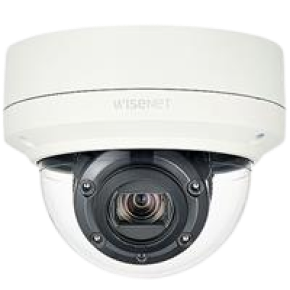
Dome cameras are ceiling mounted and named for their dome-like shape. These cameras are commonly used in indoor surveillance applications. Some models are fixed in place, while others can be remotely controlled to pan, tilt and zoom. Most dome cameras have a vandal-proof encasing, so these are a good option for areas where you want to place a vandal-resistant camera.
Uses and applications: Casinos | Banks | Libraries | Exteriors of buildings | Hotels | Restaurants | Any area where a camera is susceptible to tampering or vandalism
Shop Now
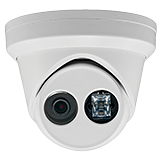
Turret cameras, sometimes known as mini dome, eyeball or flat-faced dome cameras, are small cameras that have a ball-and-socket design. These cameras offer lots of flexibility in terms of installation since the lens can pivot in any direction. Turret cameras also tend to have a compact form factor, allowing installation to be fast and easy in most cases.
Uses and applications: Hospitals | Banks | Libraries | Exteriors of buildings | Restaurants | Hotels | Theatres | Warehouses
Shop Now
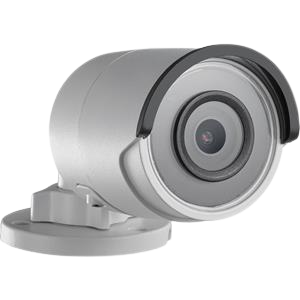
These cameras are long and protrude outward like a "bullet." Bullet cameras are great for capturing long-range images from a fixed location and work well in setups where you know exactly where you want camera coverage. They are also attached to a mounting bracket, which makes them easy install.
Uses and applications: Parking lots | Airports | Traffic intersections | Hallways | Schools | Hospitals | Manufacturing sites | Petrol Stations | Other similar environments
Shop Now
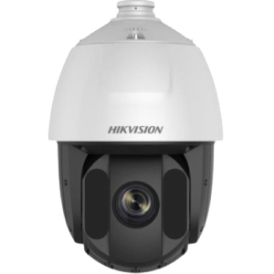
PTZ (Pan-Tilt-Zoom) cameras are a type of dome camera that offers much more control. They offer a wider field of view than stationary cameras and can cover a much larger area because of their ability to pan, tilt and zoom. They can also have the ability to rotate 360 degrees. Certain models can move between pre-set positions and zoom in automatically in response to detected events. PTZ cameras are commonly deployed in guard stations where personnel can operate them through a remote controller.
Uses and applications: Guard stations | Supermarkets | Prisons | Construction sites | Churches | Museums | Airports | Large outdoor areas
Shop Now
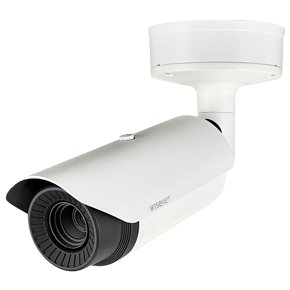
IP thermal cameras offer advanced surveillance capabilities with heat-based detection. They excel in low-light conditions, fog, and challenging environments. Their key benefits include accurate motion detection, reduced false alarms, and long-range monitoring. IP connectivity enables remote access, real-time alerts, and integration with existing security systems for comprehensive and efficient monitoring.
Uses and applications: Perimeter security | Critical infrastructure | Fire detection | Border surveillance | Traffic management | Health screening
Shop Now
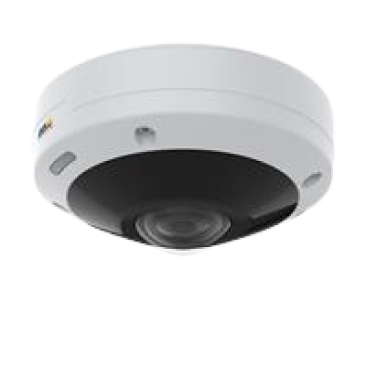
Panoramic cameras or fisheye cameras capture a very wide angle of view, typically ranging from 180 degrees to 360 degrees. They accomplish this by either having a very wide-angle lens or by having multiple lenses within a single camera structure. These types of cameras can be used in conference rooms or ceilings of small rooms to capture the entire room with one camera.
Uses and applications: Parking lots | Airports | Traffic intersections | Retail stores | Petrol Stations | Hotels | Hallways | Manufacturing sites | Warehouses
Shop Now
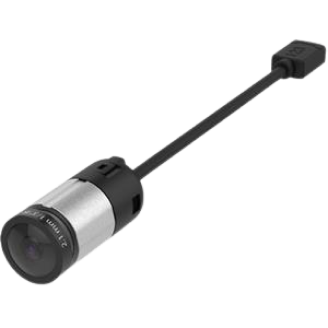
Covert cameras are small and discreet. They are typically used to capture people, sometimes up close, without them noticing. Examples of where these cameras could be used include at ATMs and drive-throughs or anywhere a discreet camera is needed. Some of these cameras even come disguised as another object like a smoke detector, wall clock and more.
Uses and applications: Cash machine | Drive-thru lanes | Vending machines | Traffic monitoring | Tollway stations and checkpoints
Shop Now
When it comes to offering better quality video and clearer, more detailed images, the higher the resolution in a camera, the better. Resolution in security cameras is usually measured in megapixels. Most cameras today come in 2MP, 4MP, 5MP or 8MP options. Some options may offer 10MP, 12MP or 20MP resolution.
Field of view in a security camera refers to how wide or narrow that camera's capture zone is. This is measured in degrees, and the most common field of view tends to be 90 degrees. Regarding field of view, other aspects to consider are lens type and the size of the lens.
Two main types of lenses are fixed and varifocal. A varifocal lens allows you to adjust the focal length, angle of view and level of zoom. A fixed lens doesn't allow you to adjust those attributes. Fixed lenses usually have a wide angle. A lens with a shorter focal length like 4mm provides an image with a wider angle of view. Lenses with longer focal lengths, such as 100mm, provide a narrower angle of view.
Shop Fixed Lenses Shop Varifocal LensesFor outdoor cameras, weather resistance is an important feature. A camera's resistance rating is referred to as the ingress protection (IP) rating, such as IP66, IP67, IP68, etc. The first digit in the rating refers to the ingress of solid objects including dust. The second digit refers to ingress of liquids such as water. For outdoor cameras, a minimum rating of IP66 is recommended. However, the higher the better.
Analog cameras are still widely available in the video surveillance industry because they are less expensive than IP cameras. Also, many customers have had their analog systems installed for a long time and would rather not rip out and replace their coax cable and wiring to update to IP cameras. For those who prefer to extend the life of their analog infrastructure for as long as possible, high definition over coax (HDoC) cameras can offer a viable method to upgrade to HD video using their existing coaxial cabling.
An important factor to consider when setting up your cameras and surveillance system is choosing the right camera cable for the type of system that you are using. If you're setting up an IP security camera system, you will need to use network cabling such as CAT5e or CAT6 ethernet cable. This type of cable can deliver both power and data to your IP cameras, allowing you to run one cable to and from the cameras. If your IP cameras are not the Power over Ethernet (PoE) type, then you will need a 12v power supply to send power to your cameras.
If installing analog cameras or HD cameras over coax, you will need to use RG59 Shotgun cable to send power and receive video from your security cameras. You can also adapt HD cameras over coax to use network cable by using a video balun. You may want to choose that option if the home or business you are working in already has ethernet cable runs. This will save time by not having to lay new cables.
Although both Digital Video Recorders (DVRs) and Network Video Recorders (NVRs) are responsible for recording video, the difference between them is how they process video data. DVRs process the video data at the recorder, while NVR systems encode and process the video data at the camera, then stream the data to the NVR. Hybrid DVRs can record both analog and digital IP camera feeds, while some DVRs are designed exclusively for either analog or IP camera systems.
A key component of video surveillance systems is storage. Storage can allow you to save your recorded video for up to months at a time. The total amount of time you can store your video will depend on many different factors including resolution, number of cameras, frames per second, compression rate and more. So be sure to equip the system with enough storage capacity to save video for the desired amount of time.
In order to see live video footage and view playback of any previously recorded video, you'll need a monitor or multiple monitors. These will be available in a variety of screen sizes and resolutions to suit your needs. It's also possible to have more than one camera feed going to a single monitor.
Cloud-connected systems have transformed video surveillance, significantly enhancing security capabilities. These systems remotely store surveillance footage and data, enabling seamless access from anywhere with an internet connection. This accessibility supports real-time monitoring and remote management, allowing users to oversee surveillance via a mobile app, ensuring security is just a touch away.
Additionally, cloud integration offers scalability and flexibility, accommodating expanding camera networks without major hardware investments. Cloud-based AI analytics can process extensive video data for object detection, facial recognition, and anomaly identification, boosting security personnel's efficiency.
Read our latest articles and explore additional solutions and guides for installers and dealers
View All
This guide will walk you through the different types of monitors and their features, enabling you to choose the right one for your customers.
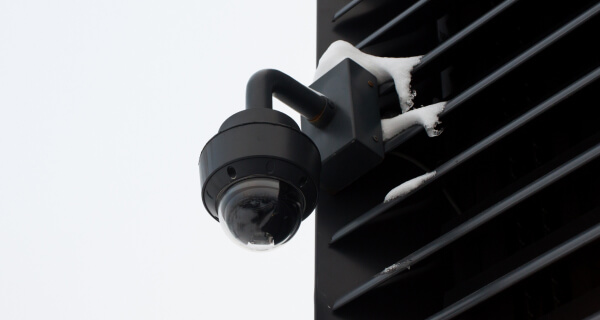
Installing and maintaining video camera systems throughout winter comes with additional challenges posed by cold weather, snow and low-light to ensure they function optimally.

Installers and integrators who need help designing solutions that save time on site, reduce overall costs, minimise risk and enhance end-user satisfaction could benefit from project support services.
ADI offers you a number of value-added services to help with all of your AV installation projects.
ADI's site survey experts will assist you on-site to understand your customer’s needs, assess site feasibility and achieve the best solution in terms of design and budget.
Let our product specialists demonstrate the latest technology, product features and customer benefits either face-to-face or in an interactive environment.
Sign up for a webinar, attend a branch event or stop by an ADI Expo near you to gain industry knowledge and learn about new products and solutions.
We aim to provide effective problem resolution while reducing time spent on-site as much as possible. Our experts can troubleshoot issues virtually or on-site.
ADI’s system design service can help with any project, designing a system that is specifically fit for your project requirements — at the best possible cost.